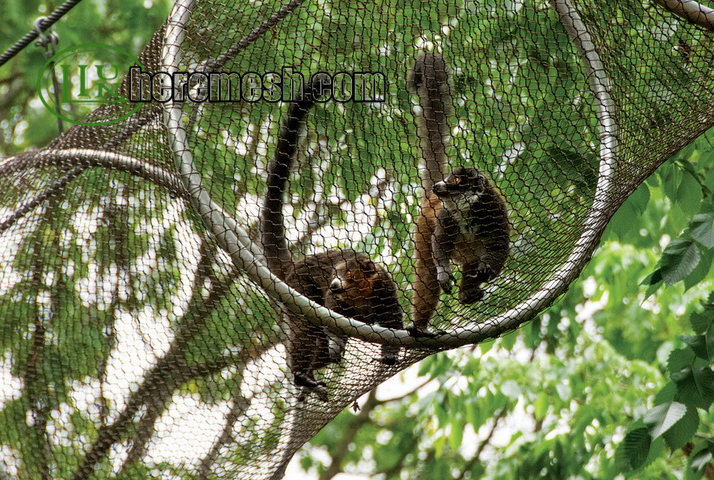Zoo Tunnel Mesh: Promote Animal Interaction and Animal Welfare

Ferrule Mesh Shipping: Adding Beauty to Park Fencing Mesh Projects
03/25/2025
Liulin Black Oxide Zoo Mesh Order for Chimpanzee Enclosure
04/07/2025With the increase of social concern for animal welfare and the advancement of zoo management concepts, modern zoos have transformed from mere animal display places to comprehensive institutions integrating conservation, education, scientific research and entertainment. In the process of this transformation, zoo tunnel mesh is being more and more widely used in the world’s leading zoos.
This design not only greatly expands the space for animals to move around, but also enriches the visitor experience. Most importantly, by mimicking the connectivity characteristics of natural habitats, the construction of animal passages significantly improves the behavioral performance and quality of life of captive animals. This design brings a new way of thinking to the planning and design of modern zoos.
1. Zoo Tunnel Mesh Introduce
Tunnel is a collective term for a series of passageways and transition spaces that connect different animal exhibits in zoos. These passages can be underground, ground or overhead. The channels are of various forms and have different functions. From the functional point of view, the zoo tunnel mesh is mainly divided into three categories. One is the transition channel connecting indoor and outdoor exhibition areas. The second is the transit channel connecting different functional areas (such as display areas, breeding areas). And the third is the leisure channel as an extension of the animal activity space.
In the early days, zoos seldom considered the setting of animal passages. And animals were always fixed in a single exhibition area. Later, with the deepening of animal behavior research, zoos gradually recognized the importance of spatial diversity to the mental health of animals. Finally, the zoo tunnel mesh has become the standard configuration of modern zoos. The design and application of animal tunnel are also becoming more and more scientific and refined.
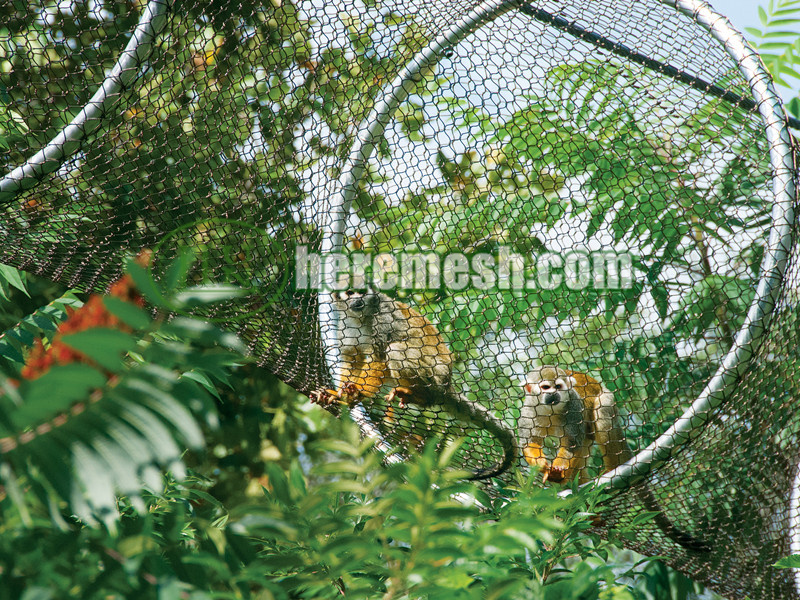
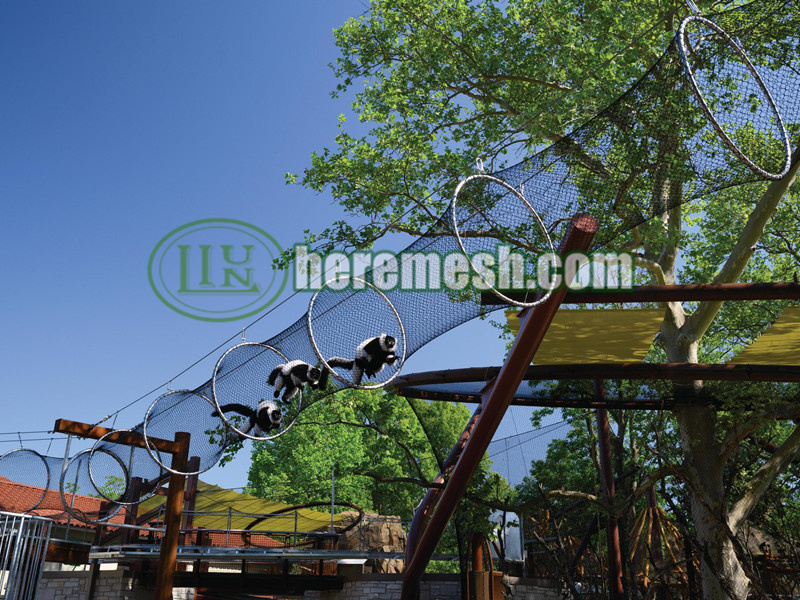
2. Ecological Zoo Tunnel Mesh Promote Natural Behavioral Expression in Animals
2.1 Building a Dynamic Activity Space System
From an animal behavioral perspective, the value of a zoo tunnel mesh is reflected on several levels. The traditional discrete exhibit design severely restricts the natural movement needs of animals. The mesh creatively connects the various exhibition areas into an organic activity channel. It can enable animals to choose their own activity paths as they would in a wild environment. This kind of spatial expansion is especially suitable for those species with a large range of activities. Carnivores and primates, for example. Their innate need to patrol their territories is effectively met by this design.
2.2 Zoo Tunnel Mesh for Community Interaction
Zoo tunnel mesh provide animals with a rich variety of environmental stimuli. The overhead mesh channels meet the vertical movement needs of arboreal species. And the multiple path options stimulate exploratory behavior. Carefully designed visual contact points allow animals to interact socially from a safe distance. These designs significantly reduce the stereotypical behaviors common to captive animals, bringing their behavioral spectrum closer to the natural state.
For herd animals, the zoo tunnel net creates a progressive social environment. Neighboring groups can be safely contacted through the mesh tunnel. The ability of young individuals to join or leave the group by their own choice contributes to a more natural hierarchical relationship, which is particularly suitable for species with complex social structures, such as wolves and rhesus monkeys.
3. Design and Construction of Zoo Tunnel Mesh
3.1 Material Selection Aspects
In terms of material selection, modern zoo tunnel mesh should take full account of the latest advances in materials engineering. Stainless steel is the material of choice for tunnel nets due to its excellent tensile strength, specially treated damage-resistant surface, excellent weathering properties and environmentally friendly recyclable properties.
3.2 Structural Design Aspects
When designing an animal tunnel mesh, the most crucial thing is to create a suitable structure according to the living habits of different animals. The structural design should fully respect the behavioral characteristics of different species and develop diverse forms. According to animal habits, zoo managers need to change the connection mode at anytime. It is conducive to animal health and growth.
Three-dimensional mesh can meet the needs of active primates. For some animals that like to move on branches or rocks, the channel should try to imitate the texture and form of these natural environments. This helps to create a more comfortable and natural environment for animals to live in the wild. These innovative designs strictly follow the principle of balancing safety and welfare to ensure the comfort and safety of the animals during use.
3.3 Security and Management Maintenance
In the design and construction of zoo tunnel mesh, stainless steel rope netting is the ideal material due to its high strength, corrosion resistance and flexibility, but its safety and long-term management and maintenance still need to be systematically considered.
Tunnel nets must ensure that they can withstand the weight of the target animals and dynamic impacts. (e.g. primate jumping or big cat climbing) The mesh needs to avoid deformation or breakage due to long-term stress. The size of the mesh should be precisely designed according to the animal’s body size to avoid the animal’s head or torso getting stuck. The edges of the mesh should be treated with burr-free edging to reduce the risk of friction.
Managers need to carry out regular inspection and maintenance of the well-installed access nets. Checking rope netting nodes and connectors weekly for looseness. And observing any localized wear or corrosion, paying particular attention to areas of high animal activity. Reinforcing or replacing the mesh if necessary according to changes in animal behavior.
Through scientific design combined with strict maintenance, the stainless steel rope net can not only ensure the safety of animal activities, but also extend the service life of the access net, realizing the double enhancement of animal welfare and operational efficiency.
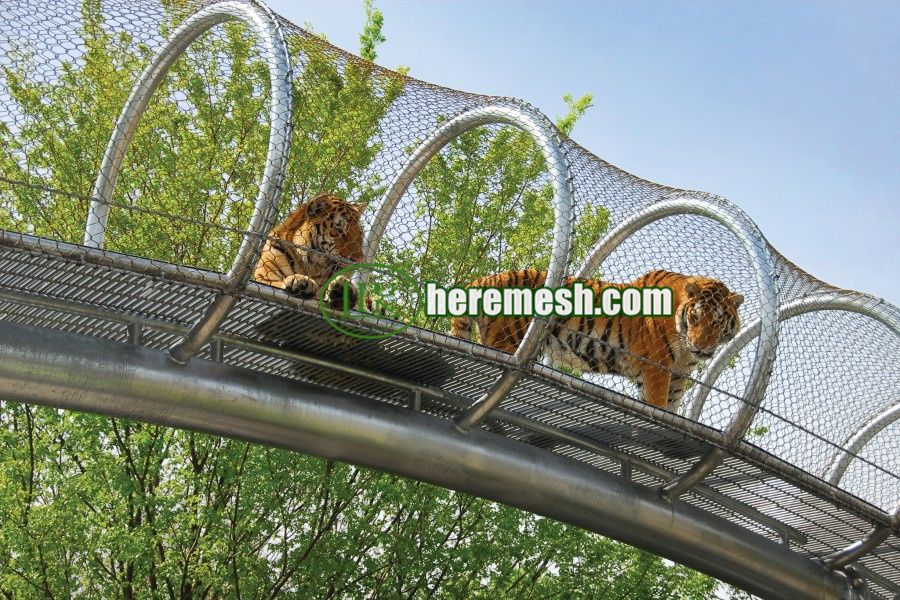
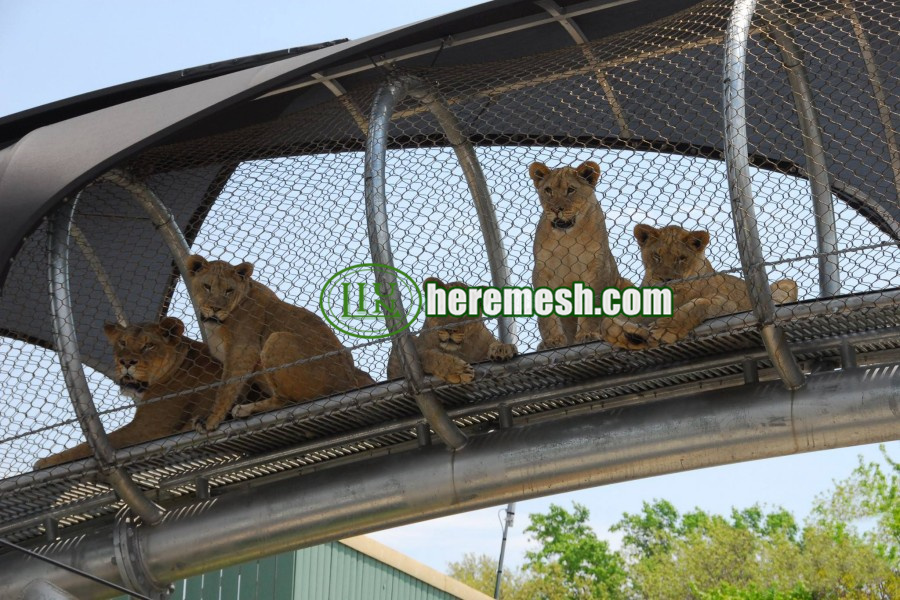
4. Application of Animal Passage Mesh in Zoo
4.1 Connection of the exhibition areas.
Zoo tunnel mesh have a wide range of important applications in zoos. The access mesh realizes the seamless connection between different exhibition areas. For example, many large cat exhibits are connected to multiple display platforms by overhead mesh passageways. Tunnel allow animals to freely choose their activity places. This design not only expands the actual range of activities of the animals, but also creates a three-dimensional spatial structure that is closer to the natural habitat.
4.2 Animal welfare enhancement.
In terms of animal welfare enhancement, the channel mesh provides animals with the autonomy to choose their environment. Studies have shown that animals that are able to independently choose their activity areas exhibit richer natural behaviors and lower levels of stereotyped behaviors. For example, a primate zoo significantly improved the psychological state of the animals by installing multiple connecting passages. It enabled the monkeys to autonomously adjust their activity areas according to factors such as weather, light, and visitors.
4.2 Visitor experience optimization.
In terms of visitor experience optimization, well-designed passageway mesh can create unique viewing perspectives and interactive opportunities. Some zoos have designed part of the animal passages in the form of stainless steel tunnels, allowing visitors to observe the animal’s movement process up close. This design ensures animal welfare and enhances visitor engagement and educational experience.
5. Conclusion: To Construct the Innovative Link of Ecological Zoo
Zoo construction is rapidly evolving in the direction of ecologization. The zoo tunnel mesh is an innovative design that redefines animal activity spaces. It creates a dynamic balance between animal welfare, behavior, and visitor experience. The eco-access mesh connects animal exhibits with other species’ habitats, creating more space for animals to move around. This design allows the zoo to break through the constraints of traditional cages. It provides animals with an environment that is closer to their natural habitats. So it can promote the expression of their natural behaviors and community interactions.
In terms of design and construction, the scientific selection of materials and structural optimization ensures the safety, durability and adaptability of the access net, enabling it to meet the physiological and behavioral needs of different species. The passageway net achieves a seamless connection between exhibition areas and enhances the psychological health and physiological welfare of animals. It also optimizes the visitors’ experience through immersive viewing and enhances the public’s knowledge and empathy towards wildlife conservation.
In the future, zoo construction will further develop in the direction of ecology, providing more accurate welfare management for animals. This innovative model not only provides an example for the transformation of modern zoos, but also opens up new possibilities for wildlife conservation and public education.
In conclusion, the zoo tunnel mesh is not only an extension of physical space, but also a vivid practice of the concept of harmonious coexistence between human and nature. Through continuous innovation, it will become an important carrier for future zoos to enhance animal welfare and enrich ecological display.
Liulin Zoo Mesh Factory provide customized service. If you are interested in stainless steel tunnel mesh, stainless steel zoo mesh, stainless steel large bird aviary mesh, animal fence mesh or zoo animal enclosure mesh, please do not hesitate contact us.


